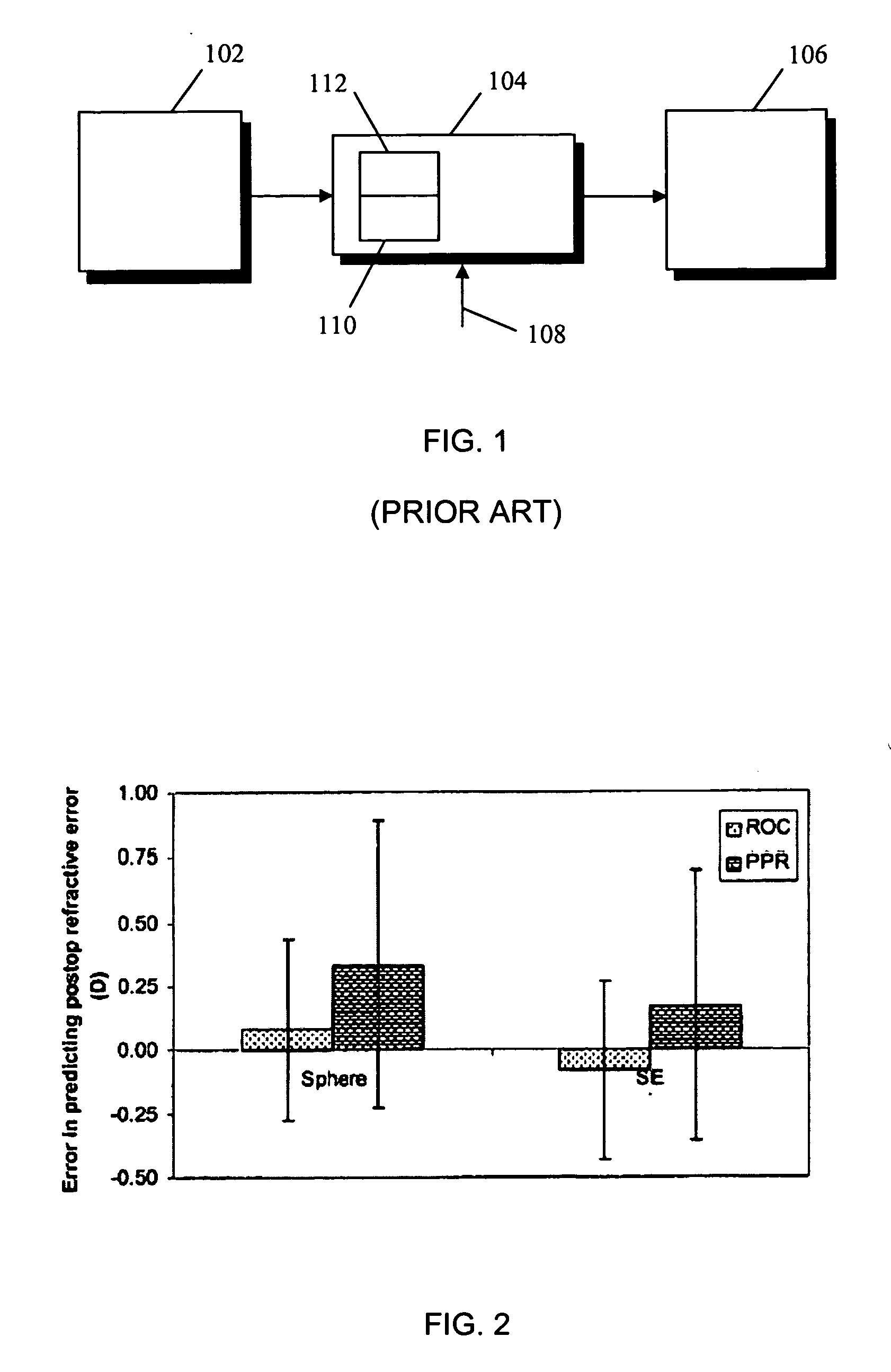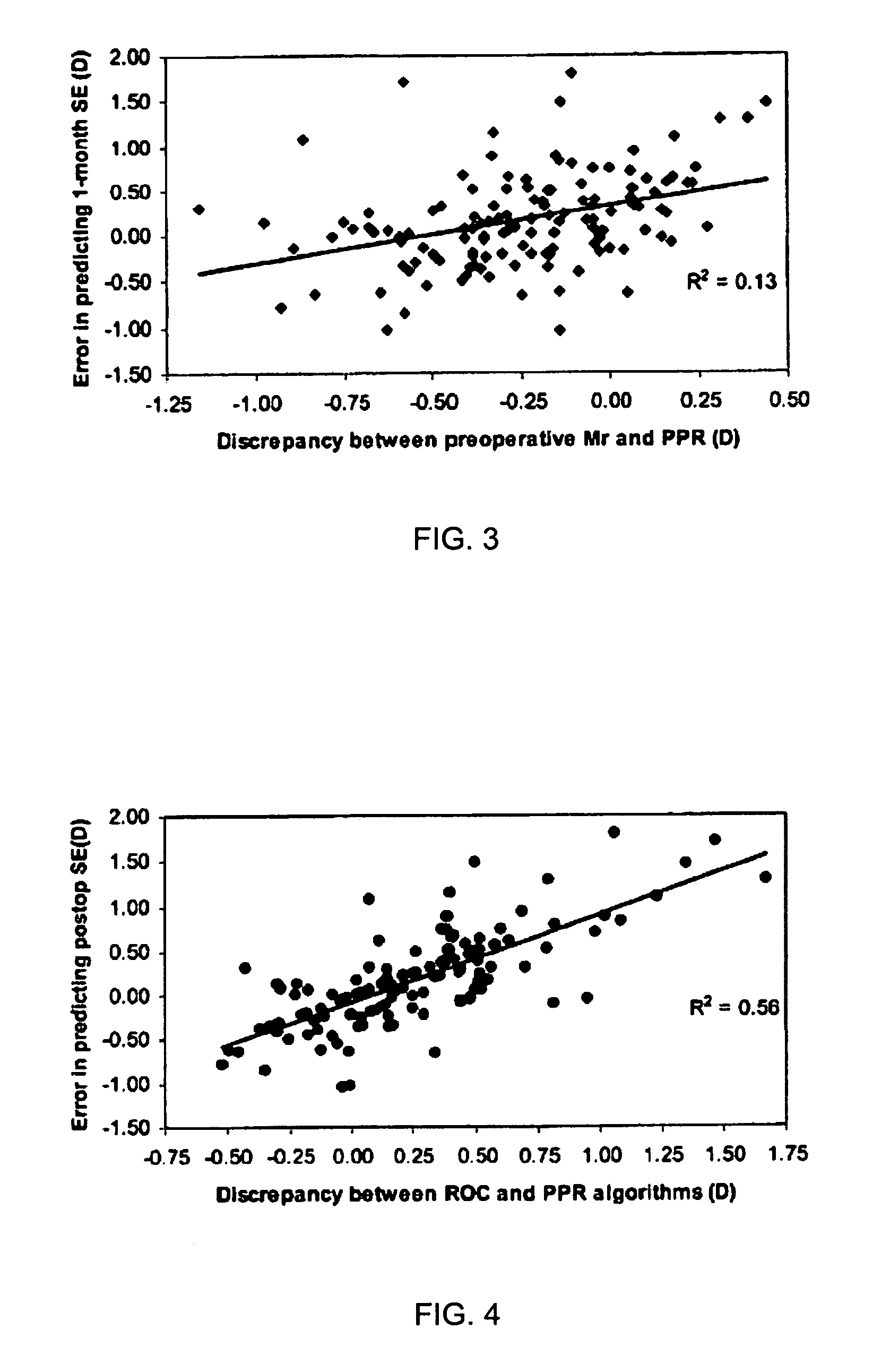System and method for treating vision refractive errors
a system and refractive error technology, applied in the field of systems and methods for treating refractive errors, can solve the problems of optics weakness, optic defects, and inability to correct with glasses or contact lenses, and achieve the effect of improving postoperative refractive outcome and reducing the amount of spherical overcorrection
- Summary
- Abstract
- Description
- Claims
- Application Information
AI Technical Summary
Benefits of technology
Problems solved by technology
Method used
Image
Examples
example 1
[0046] Protocol
[0047] In the FDA clinical trial mentioned previously, 340 myopic eyes were treated with customized LASIK using the Zyoptix® system. The Zyoptix® system uses an algorithm that calculates the amount of sphere to be treated based on preoperative Zywave® Aberrometer refraction (i.e., sphere, cylinder, and axis) and higher order aberrations (i.e., 3rd order and higher).
[0048] In a follow up study conducted by the inventions named herein, the data for 131 of the 340 myopic eyes (i.e., 67 patients) treated with the Zyoptix® system were analyzed but the estimated postoperative spherical equivalent was modified based on the nomogram according to the present invention as set forth in the embodiment shown in equation (1).
[0049] The mean spherical equivalent of the treated eyes was −4.94±2.02 D (range −1.25 to −10.25 D). The maximum amount of preoperative astigmatism treated was 4.25 D. None of the eyes had prior refractive surgery or any contraindications that would otherwis...
example 2
[0081] Protocol
[0082] 175 eyes from 89 patients treated using the nomogram according to the present invention were analyzed. Pre- and postoperative examinations included visual acuity and manifest refractions. Preoperative corneal topography was measured using an Orbscan II, by Bausch & Lomb, and the wavefront aberrations were measured using the Zywave® Aberrometer.
[0083] Results
[0084] 71 of the 175 eyes (11-percent) developed significant postoperative astigmatism (≧0.50 D). The preoperative 3rd order terms and the discrepancy between the preoperative manifest refraction analysis information and the preoperative Zywave® cylinder information obtained from the eyes were compared; the results are shown on Table 3 (bold values indicate statistical significance).
TABLE 3PreopPreopPreopPreopPreopPreopPostop3rd RMSV trefoilV comaH comaH trefoildiscrepancycyl(μm)(μm)(μm)(μm)(μm)in cyl (D)≧0.50 D0.26 ± 0.43−0.11 ± 0.14−0.20 ± 0.23−0.06 ± 0.18 0 ± 0.10 0.04 ± 0.230.40 ± 0.17 0.12 ± 0.33...
PUM
 Login to View More
Login to View More Abstract
Description
Claims
Application Information
 Login to View More
Login to View More - R&D
- Intellectual Property
- Life Sciences
- Materials
- Tech Scout
- Unparalleled Data Quality
- Higher Quality Content
- 60% Fewer Hallucinations
Browse by: Latest US Patents, China's latest patents, Technical Efficacy Thesaurus, Application Domain, Technology Topic, Popular Technical Reports.
© 2025 PatSnap. All rights reserved.Legal|Privacy policy|Modern Slavery Act Transparency Statement|Sitemap|About US| Contact US: help@patsnap.com



